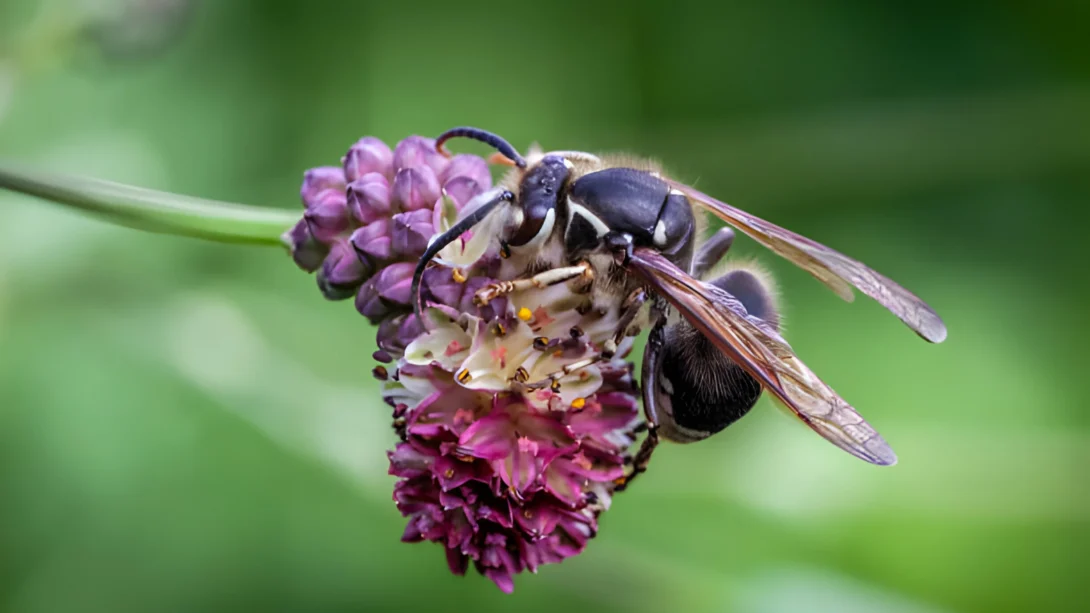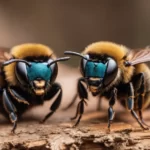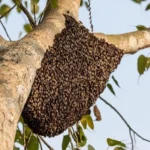Bald-faced hornets, scientifically known as Dolichovespula maculata, are fascinating creatures that often evoke fear and curiosity in equal measure. These aerial insects, though commonly mistaken for bees due to their similar appearance, are actually a type of wasp known for their distinctive black and white markings and their impressive nests. Understanding the behavior and habits of these hornets is not only crucial for pest control but also for gaining insights into the intricate workings of our natural world.
In this article, we delve into the enigmatic realm of bald-faced hornets, focusing specifically on their travel range from the nest. By exploring the distances these insects journey in search of food and resources, we can gain a deeper appreciation for their role in the ecosystem and better equip ourselves to coexist with them.
Bald-Faced Hornets
Before we delve into the intricacies of their travel patterns, let’s take a moment to familiarize ourselves with these remarkable insects. Bald-faced hornets belong to the family Vespidae and are closely related to other social wasps, such as yellow jackets. They are predominantly found in North America, ranging from southern Canada to the eastern United States.
Physically, bald-faced hornets are striking creatures, measuring about ½ to ⅝ of an inch in length. Their bodies are predominantly black, with distinct white markings on their faces, thoraxes, and the tips of their abdomens. Despite their imposing appearance, bald-faced hornets play an essential role in the ecosystem, primarily as predators of other insects and as pollinators.
Nest construction is a hallmark of bald-faced hornet behavior. These industrious insects create large, paper-like nests made from chewed wood fibers mixed with saliva. These nests can reach impressive sizes, housing colonies ranging from a few hundred to several thousand individuals. The nests are typically suspended from tree branches, shrubs, or other structures, offering protection and stability for the hornets within.
Socially, bald-faced hornets exhibit a hierarchical structure within their colonies. Each colony is led by a queen, whose primary responsibility is reproduction. Worker hornets, sterile females, undertake various tasks within the colony, including foraging, nest construction, and defense. The intricate social organization of bald-faced hornets is a testament to the complexity of their behavior and biology.
Factors Influencing Travel Range
Now that we have a foundational understanding of bald-faced hornets, let’s explore the factors that influence their travel range from the nest. These insects embark on foraging expeditions to procure food, water, and nesting materials, covering varying distances based on several key factors:
Environmental Conditions
Bald-faced hornets are sensitive to environmental factors such as temperature, humidity, and wind speed. Ideal foraging conditions typically occur on warm, sunny days when temperatures are moderate and winds are calm. Adverse weather conditions, such as heavy rain or extreme heat, can limit their foraging activity and restrict their travel range.
Availability of Food Sources
The abundance and proximity of food sources play a significant role in determining how far bald-faced hornets travel from their nest. These insects primarily feed on nectar, tree sap, and other sugary substances, as well as a variety of insects for protein. Areas with abundant floral resources, such as gardens, meadows, and orchards, are attractive foraging grounds for bald-faced hornets. Additionally, the availability of prey species, such as caterpillars and flies, influences their foraging behavior.
Predation Risks
Despite their formidable stingers and aggressive defense mechanisms, bald-faced hornets face predation risks from various predators, including birds, mammals, and other insects. To minimize these risks, they may restrict their foraging range to areas with adequate cover and protection, such as dense vegetation or wooded areas. Additionally, the presence of competing predators, such as other wasp species or spiders, can influence their foraging decisions and travel patterns.
Nest Location
The location of the nest itself can influence how far bald-faced hornets travel for resources. Nests situated in urban or suburban environments may have access to a wide range of human-made structures and landscaping features, providing ample foraging opportunities. Conversely, nests located in more remote or natural habitats may require hornets to travel longer distances to find suitable resources.
Travel Range of Bald-Faced Hornets
Having explored the factors that influence their foraging behavior, let’s now examine the travel range of bald-faced hornets in more detail. These insects exhibit both short-distance foraging behavior within close proximity to the nest and long-distance foraging expeditions that may extend several hundred meters away.
Short-Distance Foraging Behavior
Close to the nest, bald-faced hornets engage in short-distance foraging to gather resources efficiently. They typically target nearby floral sources, such as flowering plants and trees, as well as potential prey items, such as insects and spiders. Short-distance foraging allows hornets to conserve energy and minimize exposure to predation risks while meeting the immediate needs of the colony.
Long-Distance Foraging Expeditions
In certain circumstances, bald-faced hornets may undertake long-distance foraging expeditions in search of scarce or high-quality resources. These journeys can extend several hundred meters away from the nest and may involve significant time and energy investment. Long-distance foraging is more common during periods of food scarcity, such as late summer or early fall, when floral resources decline and competition for food intensifies. During these expeditions, hornets may travel across diverse habitats, including forests, fields, and urban landscapes, in search of suitable resources.
Variation in Travel Range Based on Seasonality
The travel range of bald-faced hornets can vary depending on seasonal factors such as temperature, resource availability, and colony development. In the spring and early summer, when colonies are small and food resources are abundant, hornets may restrict their foraging range to nearby areas. However, as the colony grows and food becomes scarcer later in the season, hornets may expand their foraging range and undertake longer journeys to sustain the colony.
Impact of Nest Size and Population Density
The size of the nest and the population density within the colony can also influence the travel range of bald-faced hornets. Larger colonies with more individuals may require greater foraging efforts to meet the nutritional needs of the entire colony. As a result, hornets from larger colonies may travel farther distances in search of food compared to smaller colonies with fewer individuals.
In conclusion, the travel range of bald-faced hornets from their nest is influenced by a combination of environmental, ecological, and biological factors. By understanding the intricacies of their foraging behavior and travel patterns, we can gain valuable insights into the ecology of these fascinating insects and develop effective strategies for their conservation and management.



